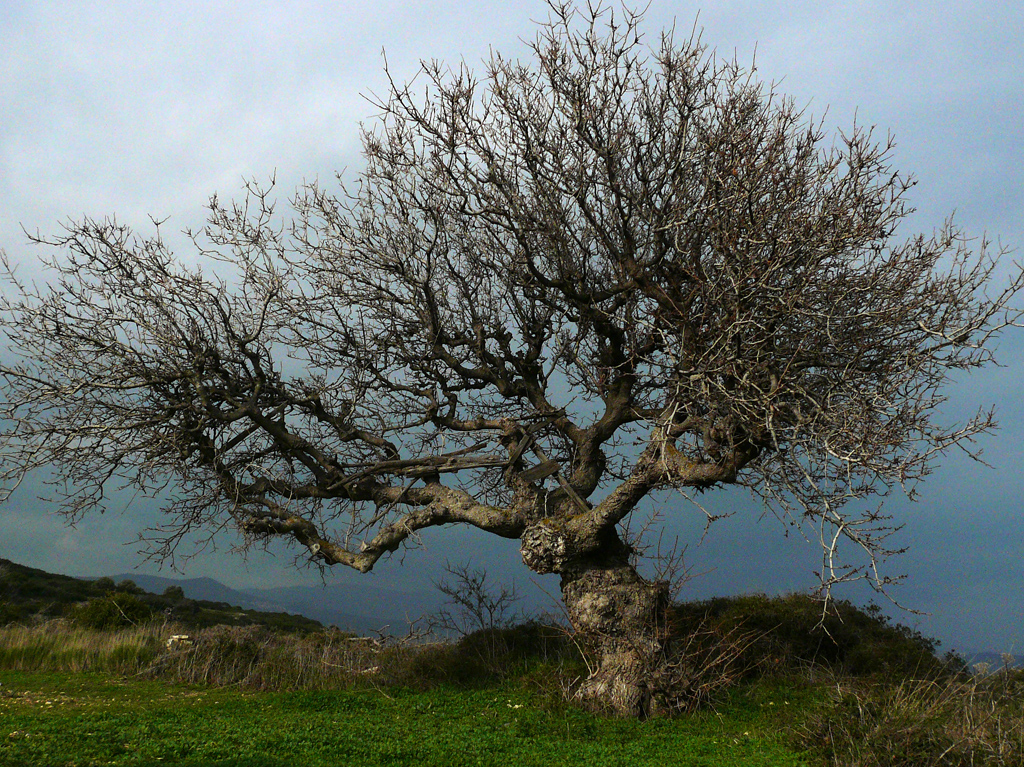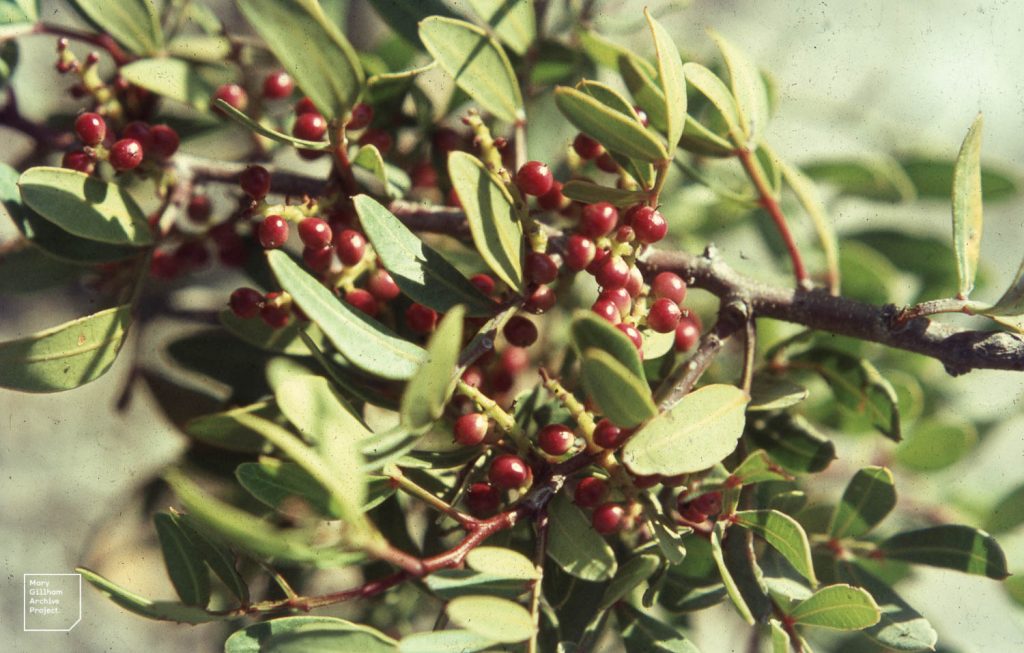Terebinth (Pistacia terebinthus)
The Terebinth (Pistacia terebinthus) is a small deciduous tree or large shrub, native to the Mediterranean region. This plant reaches a height of 10 to 33 feet (3 to 10 meters) and is well-known for its aromatic resin, which has been used since ancient times for medicinal and culinary purposes. The tree’s bark is reddish-brown, becoming rough and fissured with age. Its leaves are pinnate, consisting of 5 to 9 leaflets that are dark green and glossy, turning red or yellow in autumn before falling.
Terebinth produces small, greenish-yellow flowers in spring, which are followed by clusters of small, red to blue-black drupes (fruit) by late summer. The fruits are not typically consumed by humans but provide food for wildlife. The tree is dioecious, meaning male and female flowers grow on separate trees.

Source: xiostales
Terebinth thrives in well-drained soils and can tolerate poor, rocky, and calcareous soils. It prefers full sun and is commonly found in Mediterranean woodlands, scrublands, and rocky hillsides. The tree is drought-resistant and well-adapted to the hot, dry summers and mild, wet winters of the Mediterranean climate. Its deep roots help it survive in arid environments, making it a hardy species in challenging conditions.
Ecologically, Terebinth plays a significant role in its environment. Its dense foliage provides shelter for small animals and birds, while the tree’s resin attracts insects that pollinate its flowers. Historically, people valued the resin, known as “Chian turpentine,” for its antiseptic properties and used it in traditional medicine, perfumes, and even as a varnish for ships. Today, Terebinth continues to be valued for its resilience, and it is often planted for erosion control and reforestation in degraded lands.
Scientific Classification of Terebinth
| Kingdom | Plantae |
| Clade | Angiosperms |
| Clade | Eudicots |
| Order | Sapindales |
| Family | Anacardiaceae |
| Genus | Pistacia |
| Scientific Name | Pistacia terebinthus |

Source: Dr Mary Gillham Archive Pro
Quick Information
| Plant Type | Deciduous tree or large shrub |
| Identification | Height: Typically 10 to 33 feet (3 to 10 meters) tall Leaves: Pinnate, 5-9 leaflets, dark green, glossy, turn red or yellow in autumn Stem: Reddish-brown bark, rough and fissured with age Flowers: Small, greenish-yellow, blooms in spring Roots: Deep root system Growth Habit: Dense, bushy form Crown: Broad and spreading |
| Distribution | Native to the Mediterranean region |
| Habitat | Grows in well-drained, rocky, and calcareous soils, often found in Mediterranean woodlands, scrublands, and rocky hillsides |
| USDA Hardiness Zone | 7 through 10 |
| Growth Rate | Moderate; typically grows about 12-24 inches (30-60 cm) per year |
| Lifespan | Long-lived; can live for several hundred years |
| Growing Conditions | Sunlight: Full sun Soil: Well-drained, tolerates poor, rocky soils Water: Highly drought-resistant, needs minimal watering |
| Drought Tolerance | High; well-suited to dry Mediterranean climates |
| Diseases | Susceptible to fungal infections, especially in wet conditions |
| Pests | Vulnerable to aphids and scale insects |
| Reproductive System | Dioecious; produces male and female flowers on separate trees |
| Propagation | Through seeds and cuttings |
| Wildlife Value | Provides food (fruits) and shelter for various wildlife species |
| Uses | Resin for medicinal and industrial purposes, reforestation, ornamental planting, erosion control |
| IUCN Conservation Status | Not currently listed as threatened; widespread in its native range |
